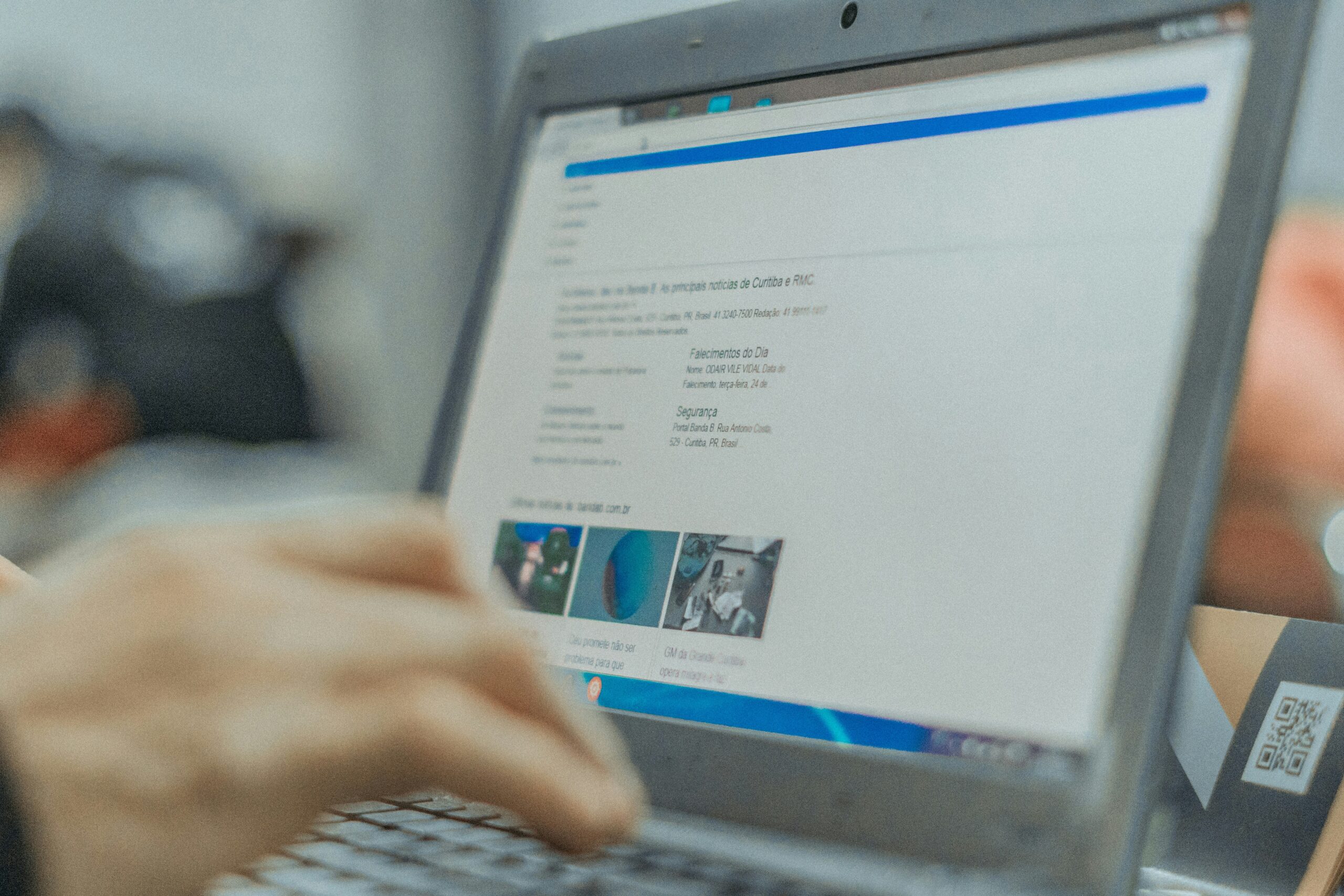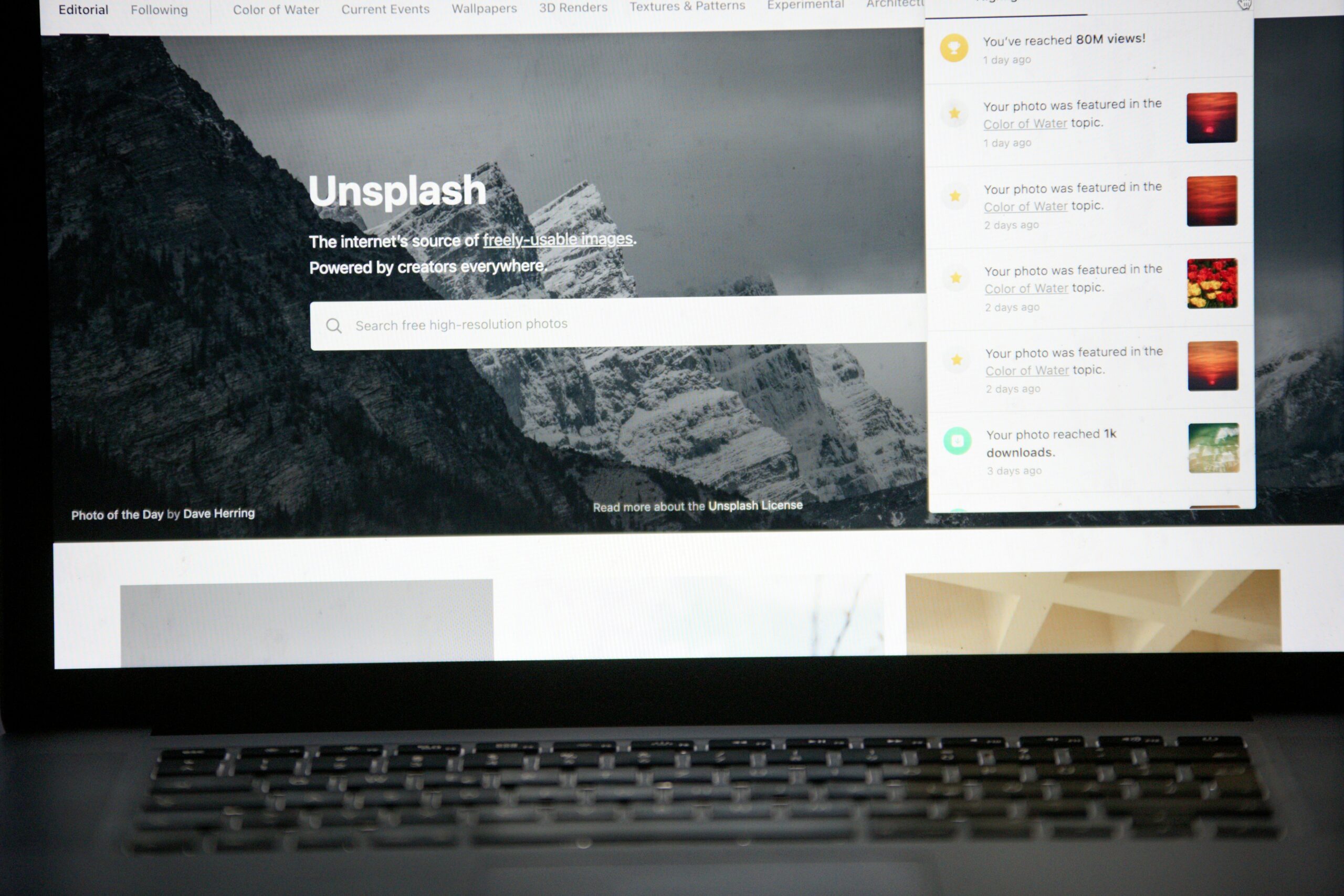Where Do Web Designers Get Their Images? Top Sources, Tips, and Best Practices Explained
When I’m building a website, choosing the right images is just as important as picking the perfect color scheme or font. The visuals I select set the mood, tell a story, and make visitors want to stick around. But finding those eye-catching images isn’t always as simple as snapping a quick photo on my phone.
I’ve learned that professional web designers rely on a mix of sources to get the best results. From stock photo libraries to custom graphics, there’s a world of options out there. Knowing where to look and what to use can make all the difference between a bland website and one that truly stands out.
Understanding the Importance of Images in Web Design

Images support user engagement by attracting attention and communicating meaning instantly. Visuals establish a website’s tone, reinforcing brand identity through style and composition. Color palettes, subjects, and image quality set visitor expectations, with sharper, relevant images increasing time-on-site compared to blurry or generic visuals.
Image dimensions, resolution, and file formats influence load times and user experiences. High-resolution JPEGs display crisp graphics for product showcases while compressed PNGs retain quality in logos and interface icons. Lazy loading and adaptive formats like WebP optimize page speed, improving SEO and bounce rates.
Illustrations, icons, and photographs create consistent messaging throughout a site. For example, e-commerce product galleries, service icons, or lifestyle banners guide users through content and call attention to key actions.
Designers choose image sources based on licensing rights, uniqueness, and thematic fit. Free stock sites support blog imagery, while premium libraries and custom shoots elevate brand credibility for business homepages.
| Image Use Case | Common Format | Example Source | Impact on Design |
|---|---|---|---|
| Hero Banners | JPEG, WebP | Unsplash, Adobe Stock | Engages on arrival |
| Product Photos | JPEG, PNG | Custom, Stocksy | Increases trust |
| Service Icons | SVG, PNG | Flaticon, Noun Project | Simplifies navigation |
| Background Textures | JPEG, WebP | Pexels, Getty Images | Adds depth |
| Illustrations for Casinos | SVG, PNG | Custom, Illustrator | Sets casino theme |
Images operate as visual anchors, driving both aesthetic consistency and functional clarity. Their selection directly shapes impressions, site usability, and overall digital presence.
Where Do Web Designers Get Their Images?

Web designers source images from multiple channels to ensure distinct visuals on each project. I combine stock photo sites, free repositories, custom assets, and client-owned content to match specific design requirements.
Stock Image Websites
Stock image websites give me high-quality, professionally shot visuals for diverse subjects like technology, business, or lifestyle. I can filter by category, orientation, and resolution to match web layouts. Leading stock platforms include:
| Provider | Licensing Type | Notable Features | Popular Use Cases |
|---|---|---|---|
| Shutterstock | Royalty-free | Extensive library | Hero images, landing pages, editorial posts |
| Adobe Stock | Royalty-free | Creative integrations | Banner backgrounds, icons, themed collections |
| Getty Images | Rights-managed, RF | Exclusive image sets | High-impact campaigns, press releases, luxury branding |
Free Image Resources
Free image resources provide cost-effective visuals. I access copyright-cleared photos, vectors, and even videos for unrestricted web use. Trusted sources include:
| Resource | Licensing Type | Standout Features | Common Contexts |
|---|---|---|---|
| Unsplash | CC0 (no attribution) | Modern photography, trending styles | Blog illustrations, startup landing pages |
| Pexels | CC0 (no attribution) | Photo and video support | Social banners, content blocks |
| Pixabay | CC0 (no attribution) | Diverse media, simple search | Backgrounds, UI placeholders |
Custom Photography and Illustrations
Custom photography and illustrations offer unique visuals tailored to brand identity. I commission specialist photographers for product shoots or direct illustrators for branded graphics, especially for one-of-a-kind visuals like mascot icons or detailed infographics. Custom assets eliminate duplication by making images exclusive to the website owner.
Client-Provided Images
Client-provided images incorporate proprietary assets like logos, staff portraits, and on-site photos. I use these images when authenticity or local context strengthens the site’s credibility. File formats and resolution often require optimization before deployment to maintain design consistency and fast load times.
| Image Source Category | Example Platforms / Contexts | Licensing | Optimal Use Case |
|---|---|---|---|
| Stock Image Websites | Shutterstock, Adobe Stock, Getty Images | Commercial/RF | High-impact banners, campaign visuals |
| Free Image Resources | Unsplash, Pexels, Pixabay | Creative Commons | Blog and background imagery |
| Custom Photography | In-house photo shoots | Client-owned | Bespoke product showcases |
| Client-Provided Images | Company archives, employee headshots | Client-owned | Team, portfolio, or credential areas |
Evaluating Image Quality and Licensing
Image quality and licensing determine if visuals support both user experience and legal compliance. I assess these factors before integrating images to maintain professional standards and avoid usage conflicts.
Copyright Considerations
I confirm every image’s copyright status before use. Images from stock libraries like Shutterstock or Getty Images grant specific licenses, such as royalty-free or rights-managed, outlining how I may use them. Free resources like Unsplash or Pexels typically use Creative Commons Zero (CC0), but some require attribution or restrict commercial projects.
| Licensing Type | Description | Example Source | Typical Requirement |
|---|---|---|---|
| Royalty-Free | Single purchase, multiple uses | Shutterstock | No attribution |
| Rights-Managed | Specific use per license | Getty Images | Usage restrictions |
| Creative Commons Zero (CC0) | Free use, no attribution | Unsplash | Usually unrestricted |
| Attribution Required | Free, with credit | Wikimedia Commons | Must credit creator |
Using unlicensed or improperly sourced images exposes sites to critical copyright claims, with statutory damages exceeding $1,500 per work in the US (U.S. Copyright Office, 2024).
Choosing the Right Resolution and Format
I ensure each image matches the technical needs of its web placement. High-resolution images over 1920×1080 pixels fit hero banners, while thumbnails require smaller dimensions. File formats impact load time: JPEGs balance quality and file size for photos, and PNGs preserve transparency for icons or logos.
| Use Case | Recommended Resolution | Preferred Format | Purpose |
|---|---|---|---|
| Hero Banner | 1920×1080+ px | JPEG | Large visual, fast loading |
| Product Photo | 800×800+ px | JPEG, PNG | Detail-focused, clear presentation |
| Icon/Logo | 256×256+ px | PNG, SVG | Crisp edges, transparency |
| Background Pattern | 1920×1080 px (repeatable) | JPEG, PNG | Lightweight, seamless tile |
I compress files to cut page load times while maintaining clarity, using tools like TinyPNG or ImageOptim for optimization. This process ensures the balance between compelling visual impact and smooth user experience.
Tips for Sourcing the Best Images

Selecting the best images starts with understanding each site’s style, audience, and technical needs. I focus on both aesthetics and compliance for every project.
Matching Images to Brand Identity
Aligning visuals with brand identity strengthens recognition and credibility. I review brand guidelines first, including color palettes, tone, and subject matter. When sourcing images for a tech brand, I prioritize modern, high-contrast photos that convey innovation. For hospitality, I use warm, vibrant scenes that suggest welcoming environments. Every image should visually echo the site’s value proposition.
| Brand Sector | Recommended Visual Style | Common Subjects | Formatting Tips |
|---|---|---|---|
| Technology | Clean, high-contrast, minimal | Devices, people, UI mockups | Use SVGs for icons |
| Hospitality | Warm, inviting, vivid | Interiors, food, smiling staff | JPEGs for banners |
| E-Commerce | Bold, detailed, product-focused | Packshots, models, experiences | 2:1 or 4:3 ratio |
| Creative Agencies | Artistic, stylized, colorful | Abstracts, workspaces, sketches | PNGs for transparency |
Tools for Editing and Optimizing Images
Editing and optimization tools shape how images appear and perform. I rely on Adobe Photoshop or Affinity Photo for retouching and color correction. For rapid resizing or basic adjustments, I use web tools like TinyPNG or Squoosh. These options help reduce file size while preserving quality, which enhances speed and SEO.
| Tool Name | Primary Use | Typical Features | Suitable Image Types |
|---|---|---|---|
| Adobe Photoshop | Detailed editing | Layers, retouch tools, export options | All formats |
| TinyPNG | Compression | Batch processing, WebP support | PNG, JPEG |
| Squoosh | Web-based optimization | Custom compression settings | JPEG, PNG, WebP |
| Affinity Photo | Pro editing/retouch | CMYK, advanced export | Professional assets |
In every project, I balance consistency, speed, and legal compliance when sourcing and prepping website images.
Conclusion
Finding the right images for a website is both an art and a science. As a web designer I know that the effort put into sourcing and preparing visuals directly shapes the user experience and brand perception. By choosing images thoughtfully and ensuring they’re optimized and properly licensed I can create websites that not only look great but also perform well and stand out in a crowded digital landscape.
Frequently Asked Questions
Why are images important for a website?
Images are crucial for a website because they grab visitors’ attention, set the mood, and quickly communicate information. Effective visuals make a site more engaging, improve user experience, and help reinforce brand identity.
Where do web designers find images for websites?
Web designers source images from premium stock photo sites (like Shutterstock, Adobe Stock, Getty Images), free resources (such as Unsplash, Pexels, Pixabay), custom photography or illustrations, and images provided by the client. Using multiple sources ensures unique and effective visuals.
How do I choose the right image format for my website?
Choose JPEGs for photos due to their balance of quality and file size. Use PNGs for icons, logos, and graphics needing transparency. Compress all images to ensure fast loading and optimal performance for users and search engines.
What are the risks of using unlicensed images?
Using unlicensed images can lead to copyright infringement, legal claims, and costly settlements. Always verify image licenses—such as royalty-free or rights-managed—and follow proper usage terms to stay compliant.
How can I make sure my website images load quickly?
Optimize images by resizing them to the needed dimensions, choosing appropriate formats, and compressing files without losing quality. Tools like TinyPNG and Squoosh can help reduce image size for faster website performance.
What factors should I consider when selecting images for my brand?
Choose images that align with your brand’s identity, follow your style guidelines, and are relevant to your sector. Consider color palettes, subject matter, image quality, and consistency to maintain a cohesive look and feel.
What tools can help optimize and edit website images?
Popular tools like Adobe Photoshop and online services such as TinyPNG or Squoosh are effective for editing and compressing images. These tools help enhance visual quality while reducing file size for better website speed.
Should I use custom images or stock photos on my website?
Use custom images when you want unique visuals tailored to your brand. Stock photos are versatile, widely available, and often more affordable. Many sites blend both for the best balance of authenticity and practicality.
How do images affect SEO on a website?
Well-optimized images improve page load times, user engagement, and accessibility—all of which positively impact SEO. Use descriptive filenames, alt text, and compressed formats to help search engines understand and rank your content better.
